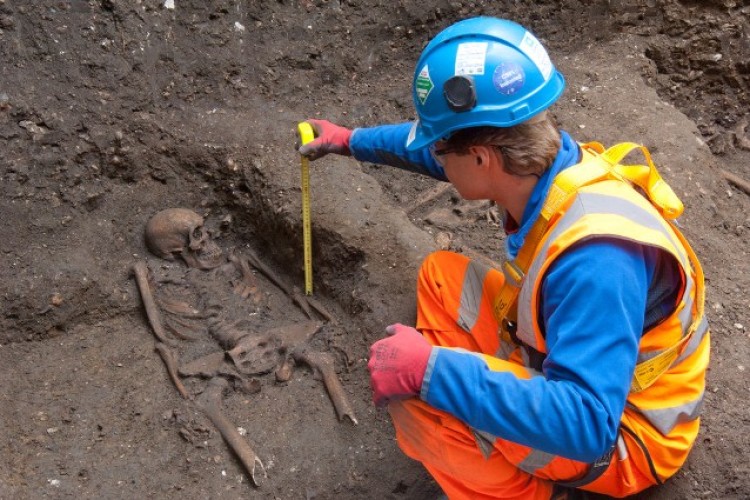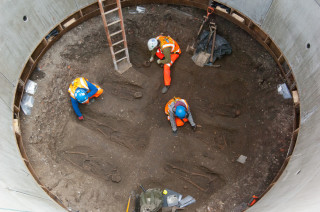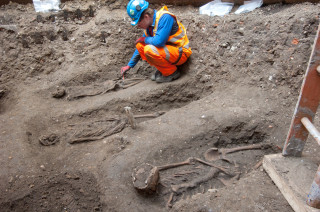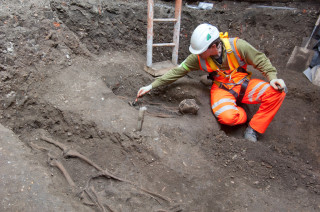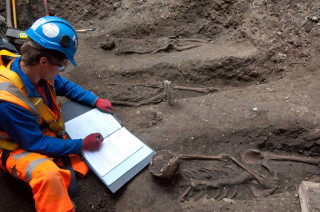Thirteen skeletons have been uncovered lying in two carefully laid out rows on the edge of Charterhouse Square at Farringdon, and are believed to be up to 660 years old.
Historical records make reference to a burial ground in the Farringdon area that opened during the Black Death Plague in 1348. The limited written records suggest up to 50,000 people may have been buried in less than three years in the hastily established cemetery, with the burial ground used up until the 1500s.
Despite significant development in the Farringdon area over the centuries, the burial ground, described in historical records as “no man’s land”, has never been located.
During the past two weeks, Crossrail’s archaeologists uncovered 13 skeletons 2.5 metres below the road that surrounds the gardens in Charterhouse Square. The depth of the burials, the pottery dated up until 1350 found in the graves and the layout of the skeletons all point to the likelihood that these skeletons were buried in Charterhouse Square during the Black Death Plague around 1349. The graves have been laid out in a similar formation as skeletons discovered in a Black Plague burial site in east Smithfield in the 1980s.
The skeletons are being excavated and taken to the Museum of London Archaeology for laboratory testing. The scientists are hoping to map the DNA signature of the Plague bacteria and possibly contribute to the discussion regarding what caused the Black Death. The bones may also be radio carbon dated to try and establish the burial dates.
Plague cannot survive for very long in the soil. After 650 years, only the skeleton bones remain and do not present any modern-day health risk.
.png)
Crossrail lead archaeologist Jay Carver said: “This is a highly significant discovery and at the moment we are left with many questions that we hope to answer. We will be undertaking scientific tests on the skeletons over the coming months to establish their cause of death, whether they were Plague victims from the 14th Century or later London residents, how old they were and perhaps evidence of who they were. However, at this early stage, the depth of burials, the pottery found with the skeletons and the way the skeletons have been set out, all point towards this being part of the 14th Century emergency burial ground.”
Charterhouse Square had previously been identified as a possible site for the lost burial ground as it was one of the few locations in Farringdon to remain undeveloped for the past 700 years.
In 1998, a single skeleton was discovered buried at Charterhouse Square when archaeologists were investigating the location of a chapel shown on historic maps. On its own, this was not enough evidence to confirm a burial ground.
Two years ago during associated utility works in Charterhouse Street, Crossrail archaeologists located human bones that had previously been disturbed and suggested a burial ground could be nearby.
These are not the first skeletons found on the Crossrail project, with archaeologists already uncovering more than 300 burials at the New Cemetery near the site of the Bedlam Hospital at Liverpool Street from the 1500s to 1700s.
Got a story? Email news@theconstructionindex.co.uk

